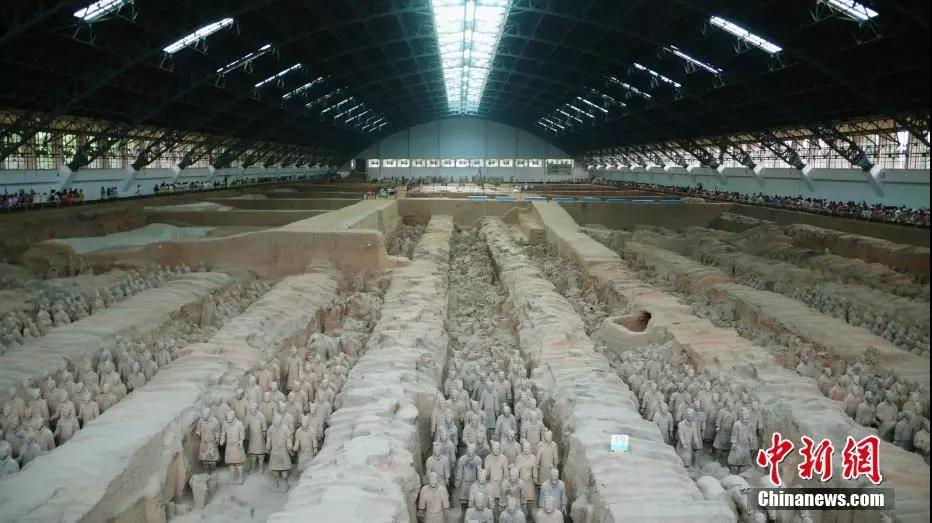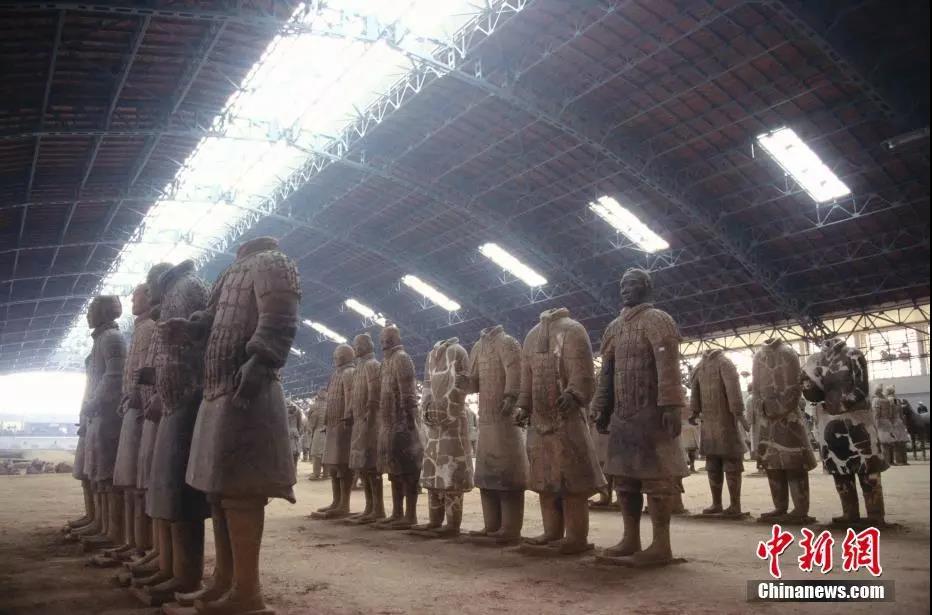


An archaeologist who was credited with discovering China's emblematic ancient Terracotta Warriors, has died aged 82, state media said.
Zhao Kangmin was largely recognised as the first archaeologist to identify fragments of terracotta which had been found by local farmers digging a well in spring, 1974.
Zhao's death on May 16 was reported by People's Daily late Friday. He died of an unspecified illness.

The 8,000-man clay army, crafted around 250BC for the tomb of China's first emperor Qin Shihuang, is a UNESCO world heritage site.
It's also a major tourist draw and a symbol of ancient Chinese artistic and military sophistication.
Mr Zhao worked as an archaeologist for more than 40 years and was the curator of the Lintong District Museum in Xi'an, capital of the northern province of Shaanxi and home city of the terracotta army.
He was the first to excavate the site and told the potential significance of the clay segments to the locals, who had taken them home to use as pillows or sold them to scrap yards.
After the first batch of terracotta fragments were discovered, Mr Zhao spent three days painstakingly gluing together the first two soldier figures, according to his own accounts published on a local newspaper.
The report was later shared by the Museum of Qin Terracotta Warriors and Horses, the official museum for the important cultural heritage.
Apparently, Mr Zhao was also the first one to name those life-size sculptures.

According to the same article, when he introduced the 5ft 10in figures he had pieced together to a journalist in April, 1974, he proudly said: 'This is a terracotta warrior from Qin Dynasty.'
When the farmers of Lintong County first stumbled upon the tomb in Xian, they alerted Mr Zhao to their discovery.
'I went to the site with another officer... Because we were so excited, we rode on our bicycles so fast it felt as if we were flying,' Mr Zhao recalled in the same article.
'The commune supervisor told us that heads and partial torsos of six to seven terracotta figures had been found by men digging a well. Someone had taken one of the heads home and stuck it in a granary to chase away rats,' he wrote.
Zhao ordered the farmers to collect the broken terracotta pieces and pile them on to three trucks, which he took to his small museum. He began to reconstruct the statues from these fragments, some as small as a fingernail, according the article.
'It was the tail end of the Cultural Revolution. But some factions were still against restoring old things. So we decided to keep it a secret,' he wrote.
But an article on Mr Zhao's work by a reporter from Xinhua news agency soon roused the interest of authorities in Beijing and a larger team of archaeologists was sent to excavate the site alongside him.

China's State Council later recognised Mr Zhao as the discoverer of the meticulously carved battalion of terracotta soldiers, archers, and charioteers, each with unique facial features, costumes, weapons and even hairstyles.
The group of nine farmers who were trying to dig the well in 1974 have petitioned the Chinese government for recognition of their discovery and compensation in 2004, according to media reports, but it is not clear whether their claims were upheld.
A number of these farmers have taken up a profession, giving autographs and telling stories to tourists as the 'discoverer of Terracotta Warriors'.

 Award-winning photos show poverty reduction achievements in NE China's Jilin province
Award-winning photos show poverty reduction achievements in NE China's Jilin province People dance to greet advent of New Year in Ameiqituo Town, Guizhou
People dance to greet advent of New Year in Ameiqituo Town, Guizhou Fire brigade in Shanghai holds group wedding
Fire brigade in Shanghai holds group wedding Tourists enjoy ice sculptures in Datan Town, north China
Tourists enjoy ice sculptures in Datan Town, north China Sunset scenery of Dayan Pagoda in Xi'an
Sunset scenery of Dayan Pagoda in Xi'an Tourists have fun at scenic spot in Nanlong Town, NW China
Tourists have fun at scenic spot in Nanlong Town, NW China Harbin attracts tourists by making best use of ice in winter
Harbin attracts tourists by making best use of ice in winter In pics: FIS Alpine Ski Women's World Cup Slalom
In pics: FIS Alpine Ski Women's World Cup Slalom Black-necked cranes rest at reservoir in Lhunzhub County, Lhasa
Black-necked cranes rest at reservoir in Lhunzhub County, Lhasa China's FAST telescope will be available to foreign scientists in April
China's FAST telescope will be available to foreign scientists in April